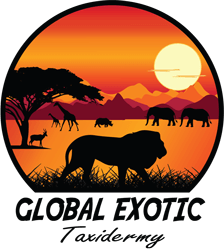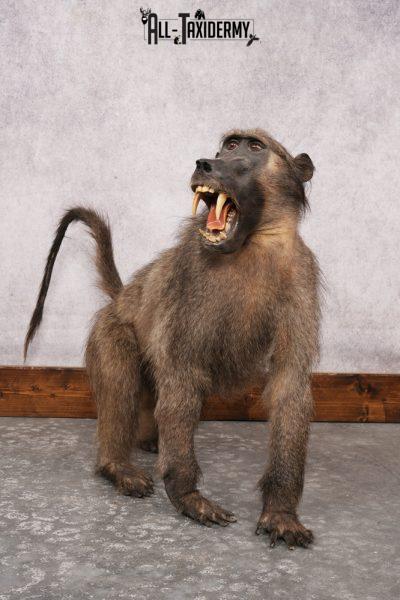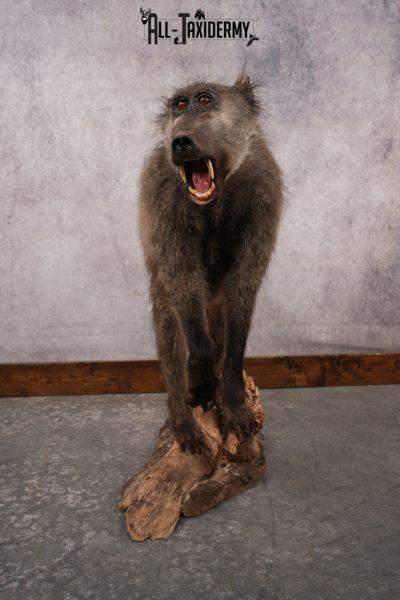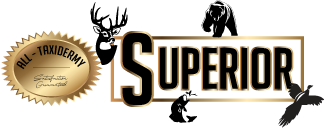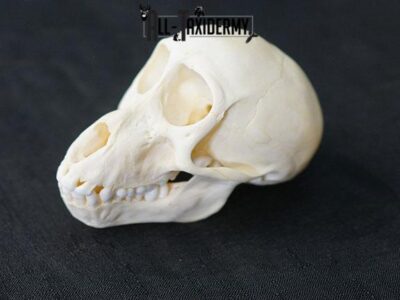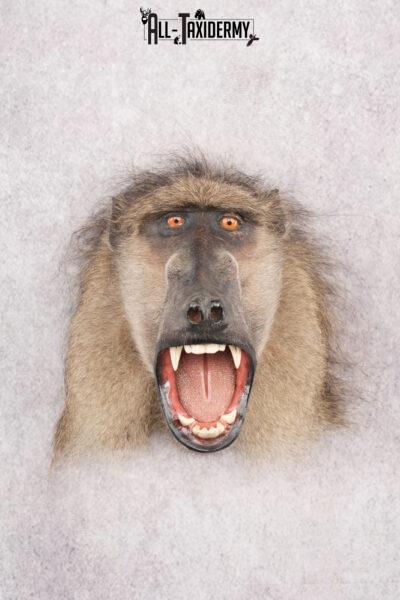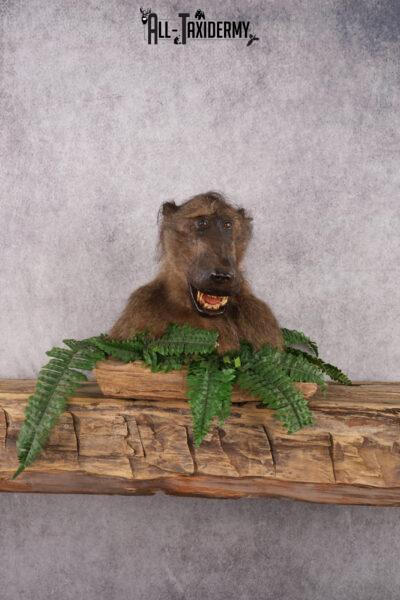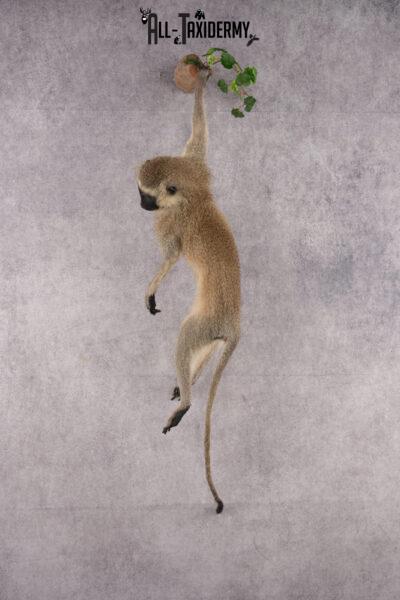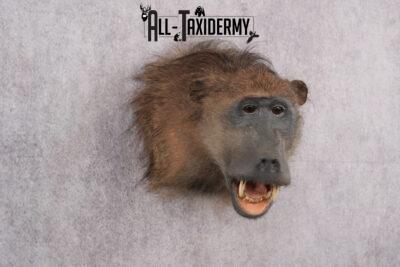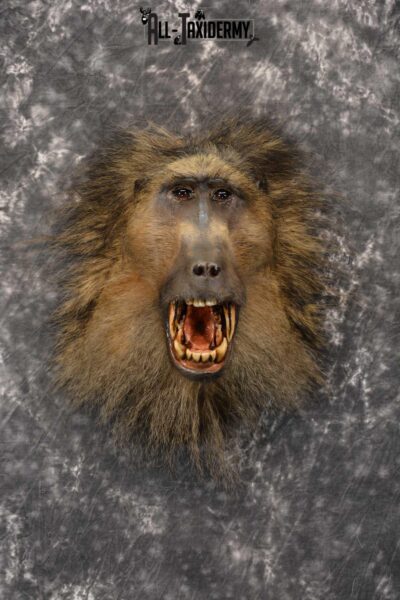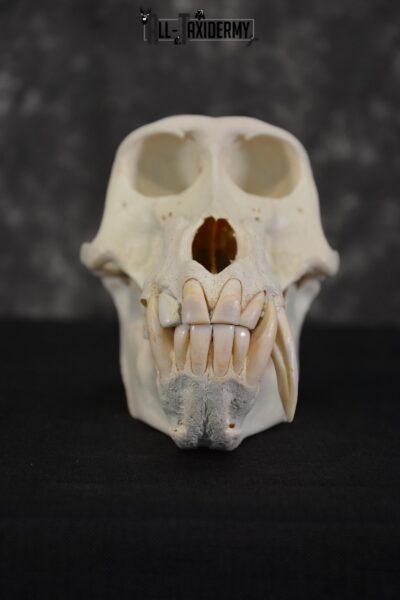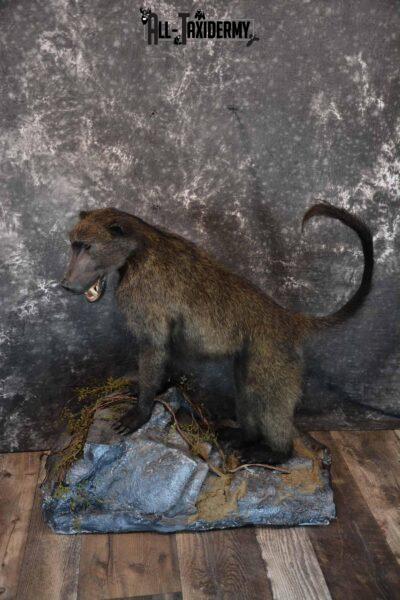- New!



Free Standing Aggressive ... Read More
African Baboon SKU 3207
$2,995.00-
View Details - New!



Aggressive Pose ... Read More
African Baboon SKU 3312
$3,495.00-
View Details 


Amazing Condition ... Read More
Squirrel Monkey SKU 3169
$2,495.00-
View Details

Professionally Cleaned w/ All Teeth ... Read More
African Chacma Baboon taxidermy skull adolescent SKU 2229
$695.00-
View Details
 SOLD
SOLDOutstanding Condition ... Read More
Baboon Taxidermy Shoulder Mount SKU 2776
-
View Details
 SOLD
SOLDAfrican Baboon taxidermy shoulder mount for sale SKU 2741
-
View Details
 SOLD
SOLDAmazing Piece ... Read More
African Vervet Monkey taxidermy mount for sale SKU 2738
-
View Details
 SOLD
SOLDAggressive Look! ... Read More
African Baboon Taxidermy Shoulder Mount SKU 2612
-
View Details
 SOLD
SOLDOriginal Teeth ... Read More
African Chacma Full body Baboon taxidermy mount SKU 2370
-
View Details
 SOLD
SOLDAmazing Detail ... Read More
African Baboon Full body taxidermy mount for sale SKU 2056
-
View Details
 SOLD
SOLDHanging Monkey ... Read More
Vervet monkey full body taxidermy mount for sale * SKU 2064
-
View Details
 SOLD
SOLDAttention to Detail ... Read More
Vervet Monkey full body taxidermy mount for sale * SKU 2062
-
View Details
 SOLD
SOLDOriginal Teeth ... Read More
African Baboon Taxidermy Shoulder Mount SKU 2005
-
View Details

 SOLD
SOLDOrignal Teeth, Outstanding ... Read More
1/2 body African Chacma Baboon taxidermy mount for sale SKU 1970
-
View Details
 SOLD
SOLDAll Original Teeth ... Read More
African Baboon Taxidermy Shoulder Mount for sale SKU 1826
-
View Details
 SOLD
SOLDCollectable ... Read More
African Baboon Skull Taxidermy for sale SKU 1482
-
View Details
 SOLD
SOLDNose to Tail 60" ... Read More
Chacma Baboon Taxidermy Mount for Sale SKU 1296
-
View Details
Monkey Taxidermy Mounts
If you’re looking to expand your African or Asian exotic taxidermy collection, some of the world’s most fascinating creatures is the monkey. From Baboons to Vervet monkeys, All-Taxidermy has a wide variety of primates to choose from! Our best museum-ready pieces will be denoted by the Trophy, Superior, and Excellent quality grade logos, as well as our Global Exotic Taxidermy badge to indicate our best work.
Have questions about our monkey taxidermy mounts? Just give us a call at 888-983-3886 for a quote on your custom project, or ask about shipping and handling, etc. Or, please browse all our monkey taxidermy below to find the next exotic addition for your African or Asian taxidermy collection!
Shop Monkey Taxidermy Online
All-Taxidermy/Albers & Co. is dedicated to preserving mammals of all kinds, from North American species like deer and bear, to exotic African species like big cat, antelope, and monkeys. All monkey taxidermy mounts listed on this page will have a quality badge indicating the quality of work. Our best pieces will be represented by the Global Exotic Taxidermy logo – meaning that they are the perfect additions to your African, South American, and Asian collection.
Let’s explore each of the most popular monkey species below. If you’re looking for other species to add to your cart besides monkeys, please check out all our other taxidermy mounts here.
Chacma Baboon
The Baboon is one of Africa’s most distinctive mammals, making up the genus Papio. There are six different species of baboon in the world, dwelling in each of the six regions of Africa (with the Hamadryas baboon being native also to the Arabian peninsula). The six species include the Hamadryas baboon (Papio hamadryas), Guinea baboon, Olive baboon, Yellow baboon (Papio cynocephalus), Kinda baboon (Papio kindae), and Chacma baboon. All baboon species are characterized by their elongated, dog-like muzzle, sharp canine teeth, close-set eyes, thick hair, medium-length tails, and protruding bottoms.
The Chacma baboon is the largest baboon species, weighing up to 88 lbs. This species resides in the Southern Africa region and lives in different terrain, from forests, to savannahs, to shrubland/grassland, to rocky, desert regions. The Chacma baboon prefers an omnivorous diet of fruit, leaves, insects, eggs, seeds, flowers, grass, roots, and small vertebrates. The baboon lives in groups called “troops.”
We feature the Chacma baboon as one of our top picks for adding to your African taxidermy collection. Check out our article here for more ideas.
Squirrel Monkey
The Squirrel monkey makes up the genus Saimiri. This small monkey is native to the tropical forest regions of Central and South America, residing in the canopy layer. The Squirrel monkey can be found throughout the Amazon rainforest, and the forests of Costa Rica and Panama. There are multiple species of Squirrel monkey, including the Black-crowned Central American squirrel monkey, Common squirrel monkey, Black-capped squirrel monkey, Black squirrel monkey, Bare-eared squirrel monkey, Golden-backed squirrel monkey, and the Black-headed squirrel monkey.
The Squirrel monkey, unlike many other monkey species, cannot use its tail for gripping tree branches, however, they use their tail instead for balance. This primate is pretty small, weighing only between 7.6 to 9.8 ounces. They have short fur that is usually olive or greyish in color, with bright yellow legs and a white face (although there is a variation in color based on their subspecies). They are highly social animals, living in large troops of around 40-50 monkeys on average, although up to 500 individuals have been reported!
Vervet Monkey
This small, black-faced, greenish-olive colored monkey lives in Southern and Eastern Africa. They are a highly social monkey species, living in troops of between 10-50 individuals, which are active during the day and sleep during the nighttime hours. There are multiple Vervet monkey subspecies, and they are the most widespread monkey species in Africa – ranging from Southern Sudan and Ethiopia all the way down to South Africa. There are four Vervet subspecies, including the Hilgert’s Vervet monkey, Pemba Vervet monkey, Southern Vervet monkey, and the Reddish-Green Vervet monkey.
The Vervet monkey prefers a diet of wild fruits, flowers, nectar, leaves, deeds, seed pods, grasshoppers, termites, and also sometimes farm crops. They are incredibly adaptable species, however, they often occupy human settlements and are perceived as pests in many of those areas. The Vervet monkey lives in savannah regions, open woodlands, forests, and grassland areas near rivers and lakes. Please browse all our Vervet monkey taxidermy online to add to your African exotic collection!
Monkey Life-Size Taxidermy, Shoulder Mounts, & Skulls
We have several different options for taxidermy collectors, including life-size mounts showing the monkey walking alongside African brush, grooming another monkey, or climbing/swinging on a tree branch. Our life size mounts will look best paired with a custom habitat like a tree branch, vegetation, etc. to make it really look at home in its natural habitat! We also have shoulder mounts to focus on the eyes, muzzle, and open mouth/teeth of the primate. Monkey shoulder mounts are perfect for showing the wide range of emotions that these primates are capable of displaying – from a peaceful stance, to aggression, to communicating/calling to other monkeys in their troop.
Lastly, the monkey skulls we have available in our store are perfect if you’re looking to expand your skull collection, or are searching for skulls and bones for your educational exhibition or museum. Our taxidermy monkey skulls are professionally cleaned using the Dermestid beetle-cleaning method for a bright white clean look. Our skulls show off the impressive teeth of the baboon, or other monkey species.
Shop All-Taxidermy for Monkey Taxidermy Mounts
All-Taxidermy/Albers & Co., based in Wrightstown, WI, has years of professional experience working with African, Asian, and South American monkey species. From the small Squirrel monkey, to the larger Chacma baboon, we work with a number of fascinating primate creatures. Our taxidermists focus on making each feature of the monkey look as accurate to the real-life animal as much as possible, capturing the hair, facial features, tail, tree-dwelling, and social characteristics with every specimen we work with.
For Baboons, Squirrel monkeys, and Vervet monkeys, we highly suggest adding a custom habitat like a tree branch for added interest, and to highlight the animal’s climbing abilities. No matter if you already have a specimen, or you’re looking for monkey taxidermy in our store, we have you covered! Contact the All-Taxidermy team by phone at 888-983-3886 or online on our contact us page today to discuss your taxidermy trophy.


